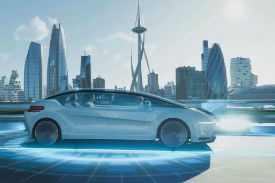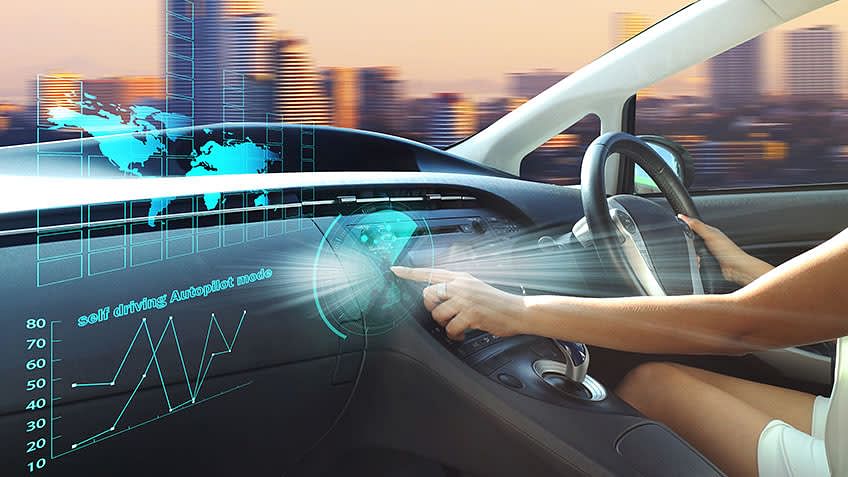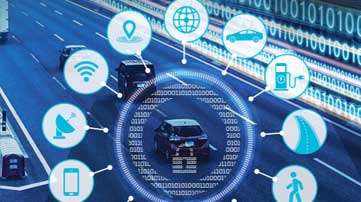
The The Revolutionary Rise of Autonomous Vehicles: Transforming the Automotive Industry 2024-The world of transportation is undergoing a remarkable transformation, and at the heart of this evolution are autonomous vehicles. Imagine a future where your car drives itself while you sit back and enjoy the ride. It sounds like science fiction, but in reality, self-driving cars are becoming an increasingly tangible part of our automotive landscape. Let’s dive into this exciting development and explore how autonomous vehicles are shaping the vehicle sector.
What Are Autonomous Vehicles?

Autonomous vehicles, often referred to as self-driving cars, are equipped with advanced technologies that allow them to navigate and operate without human intervention. These vehicles use a combination of sensors, cameras, radar, and artificial intelligence (AI) to perceive their surroundings, make decisions, and drive safely. The goal is to create a safer and more efficient driving experience by reducing human error and optimizing traffic flow(Read More : Could the way Canadians park vehicles be part of the housing crisis? – National).
The Technology Behind Autonomous Vehicles
At the core of autonomous vehicles are sophisticated technologies that work together to enable self-driving capabilities. Here’s a breakdown of the key components:
- Sensors and Cameras: These vehicles are equipped with an array of sensors and cameras that provide a 360-degree view of their environment. These sensors detect obstacles, pedestrians, and other vehicles, allowing the car to respond to its surroundings in real time.
- Radar and LiDAR: Radar and LiDAR (Light Detection and Ranging) technologies are crucial for measuring distances and detecting objects in various weather conditions. LiDAR uses laser beams to create a detailed 3D map of the vehicle’s surroundings, while radar helps in detecting objects at longer ranges.
- Artificial Intelligence: AI algorithms process the data collected by sensors and cameras to make driving decisions. These algorithms enable the vehicle to interpret complex scenarios, such as navigating through traffic or responding to unexpected obstacles.
- Vehicle-to-Everything (V2X) Communication: V2X communication allows self-driving cars to exchange information with other vehicles, infrastructure, and pedestrians. This enhances safety and coordination by sharing real-time data about road conditions and traffic situations.
The Benefits of Autonomous Vehicles

The advent of self-driving cars promises a range of benefits that extend beyond just convenience. Here are some of the key advantages:
- Enhanced Safety: Human error is a leading cause of traffic accidents. Autonomous vehicles aim to significantly reduce accidents by eliminating common driving mistakes, such as distracted or impaired driving. Advanced safety features, such as automatic emergency braking and collision avoidance systems, contribute to a safer driving experience.
- Increased Efficiency: Self-driving cars can optimize driving patterns to improve fuel efficiency and reduce traffic congestion. By communicating with other vehicles and traffic management systems, these cars can coordinate their movements, resulting in smoother traffic flow and fewer traffic jams.
- Accessibility: Autonomous vehicles have the potential to improve mobility for individuals who are unable to drive due to age, disability, or other reasons. This increased accessibility can enhance the quality of life for many people and provide greater independence.
- Reduced Environmental Impact: Many self-driving vehicles are designed to be electric, which contributes to a reduction in greenhouse gas emissions. By optimizing driving patterns and reducing fuel consumption, these vehicles can play a significant role in promoting environmental sustainability.
Challenges and Considerations

While the potential benefits of autonomous vehicles are substantial, there are also challenges and considerations that need to be addressed:
- Regulation and Legislation: The regulatory landscape for self-driving cars is still evolving. Governments and policymakers need to establish clear guidelines and standards for the testing and deployment of these vehicles to ensure safety and legal compliance.
- Ethical and Social Implications: Autonomous vehicles raise ethical questions about decision-making in critical situations. For example, how should a self-driving car prioritize the safety of its occupants versus pedestrians in an emergency scenario? These ethical dilemmas require careful consideration and debate.
- Infrastructure Requirements: To fully realize the potential of autonomous vehicles, infrastructure improvements may be necessary. This includes updating roadways, signage, and communication systems to support the integration of self-driving cars into existing transportation networks.
- Public Acceptance: For autonomous vehicles to become mainstream, public trust and acceptance are crucial. Educating consumers about the benefits and safety of self-driving technology, as well as addressing any concerns or misconceptions, will be essential for widespread adoption (Read More : 2025 Mercedes-Benz EQS Debuts New Look, Improved Range).
The Road Ahead
The journey towards widespread adoption of autonomous vehicles is well underway, and the car industry is at the forefront of this revolution. Leading automotive companies and technology firms are investing heavily in research and development to advance self-driving technology and bring it to market.
As autonomous vehicles continue to evolve, they have the potential to transform the way we travel, making our roads safer, more efficient, and more accessible. The future of transportation is not just about self-driving cars; it’s about creating a smarter, more connected world where technology enhances our daily lives.
In conclusion, the rise of autonomous vehicles represents a significant leap forward for the vehicle sector. With ongoing advancements and a commitment to addressing challenges, the dream of a self-driving future is becoming a reality. As we navigate this exciting journey, one thing is clear: the road to the future is paved with innovation, and autonomous vehicles are leading the way.
Read More : Automotive Industry: Innovative the Future of Electric Vehicles in 2024








1 thought on “The Revolutionary Rise of Autonomous Vehicles: Transforming the Automotive Industry 2024”
Comments are closed.